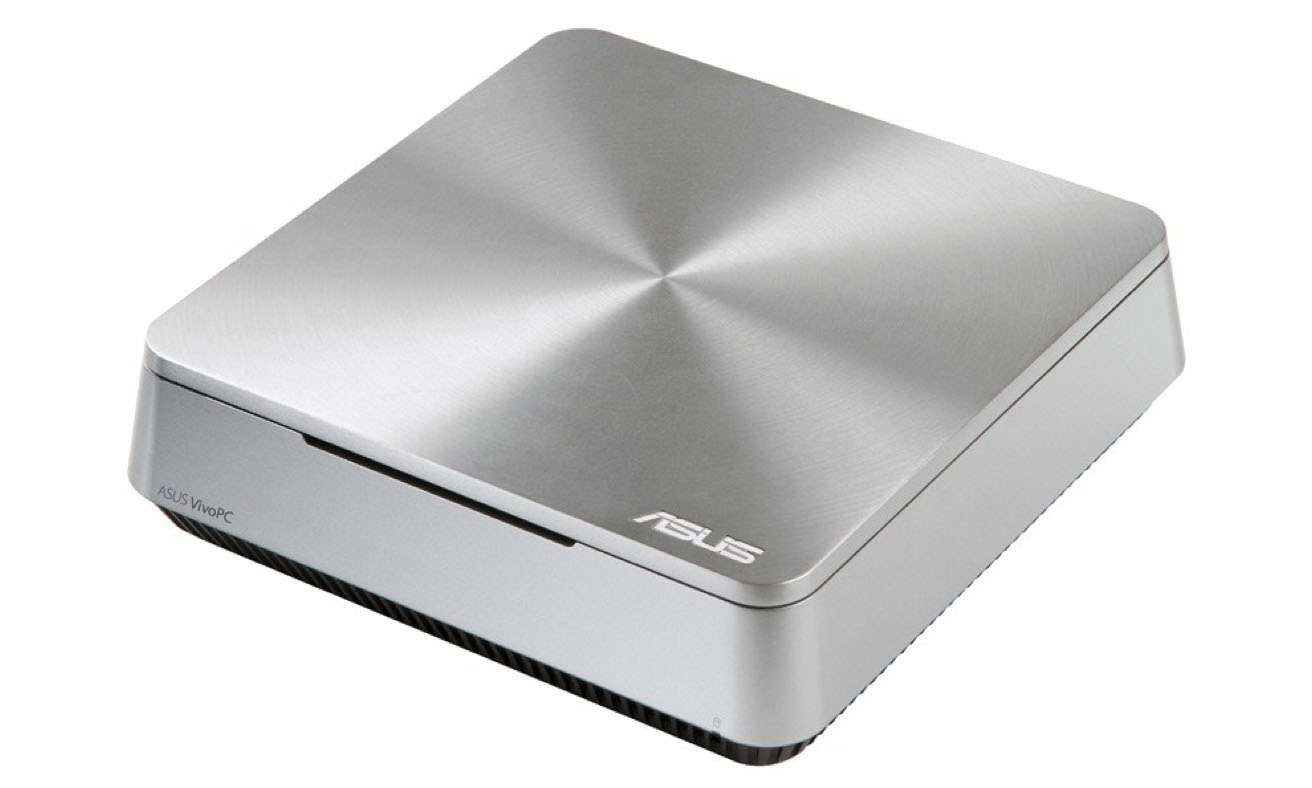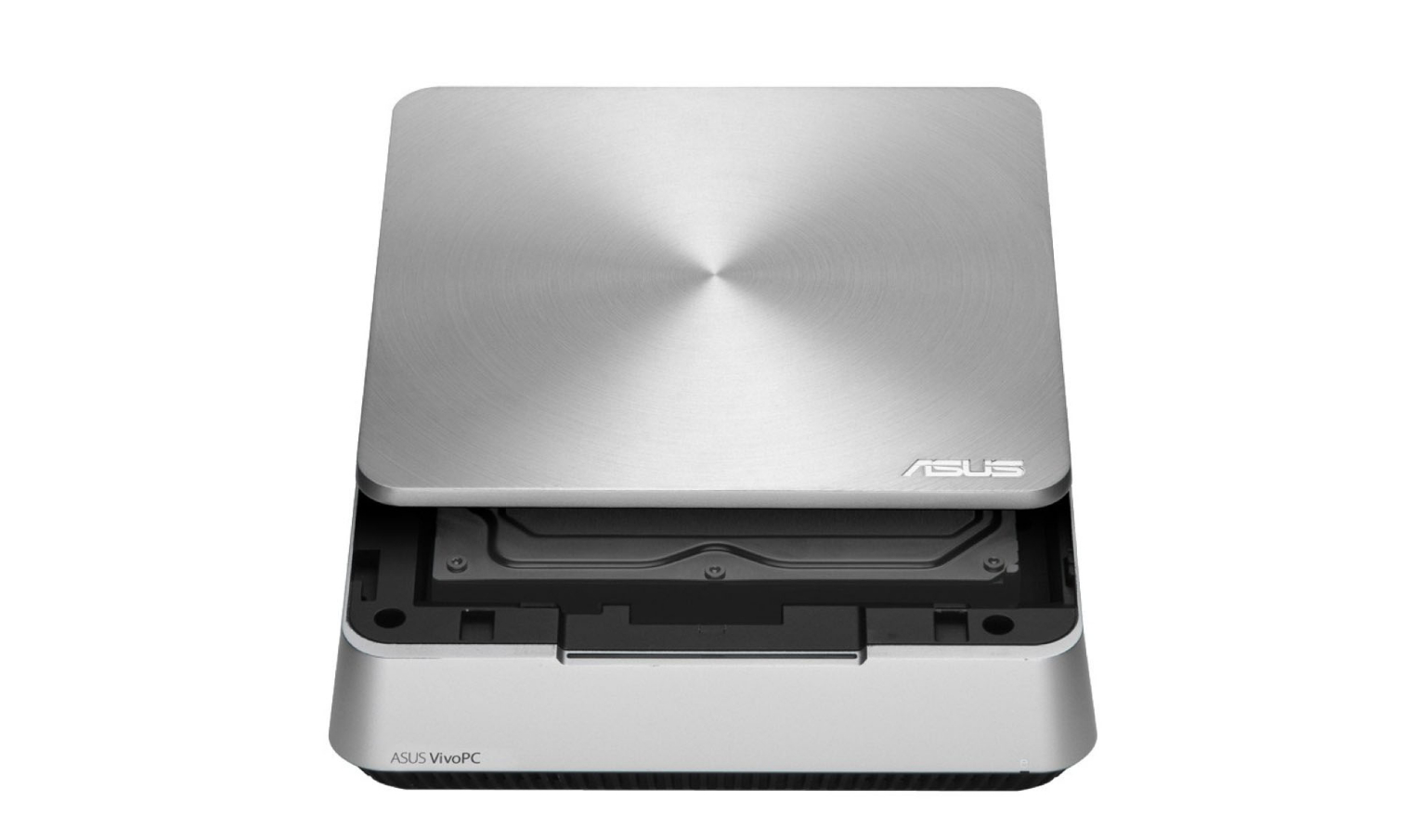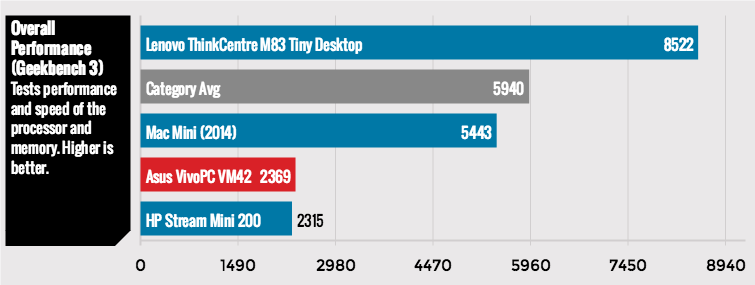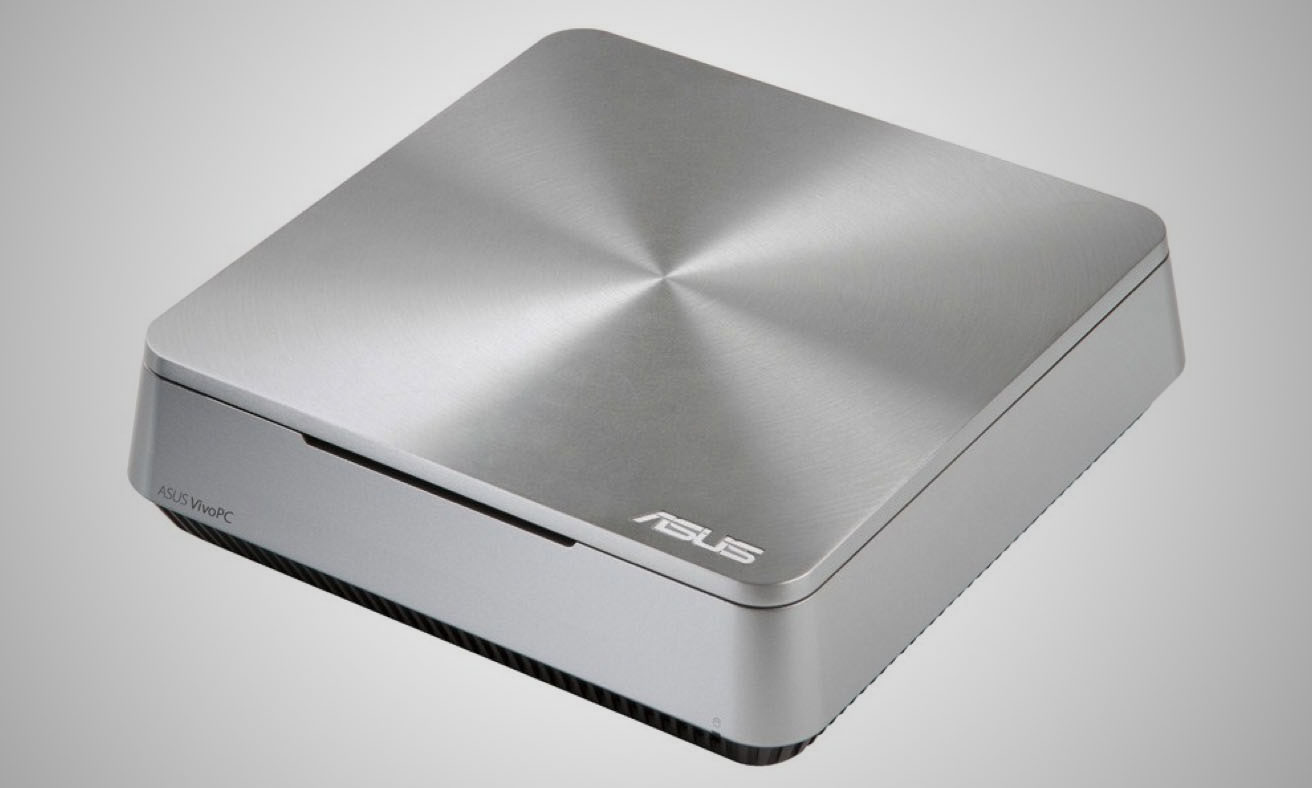Tom's Guide Verdict
The Asus VivoPC is a sleek and upgradable mini PC that works well for basic media streaming and multitasking.
Pros
- +
Sleek, portable design
- +
Easy to upgrade
- +
Affordable
- +
Loud integrated speakers
Cons
- -
Average out-of-box performance
Why you can trust Tom's Guide
The Asus VivoPC VM42 is compelling enough at first glance, offering desktop-grade performance within a slick, space-saving design for an attainable $249 price tag. (You'll have to buy a keyboard and mouse separately.) But this mini PC truly shines when you pop it open and see the storage bays that let you upgrade its hard drive or RAM in seconds. While the VivoPC's starting performance isn't completely stellar, its easy upgradability makes it a mini PC that can get better with age.
Design
Sporting a shiny aluminum body supported by a plastic black base, the Asus VivoPC looks like a fancy miniature scale rather than a full desktop PC. The square-shaped computer sports curved edges that expand outward toward the bottom, creating a sleek design that would complement your living room TV as well as it would your desk monitor.

At 7.5 x 7.5 x 2.2 inches and 2.6 pounds, the Vivo is almost identical in size and weight to Apple's Mac Mini (7.7 x 7.7 x 0.14 inches, 2.6 pounds) and Lenovo's ThinkCentre M83 (7.2 x 7 x 1.35 inches, 2.6 pounds). The puck-shaped HP Stream Mini (5.73 x 5.7 x 2.1 inches, 1.4 pounds) is much smaller and even more travel-friendly by comparison.
Ports and Upgradability
The VivoPC's backside hosts a plethora of useful ports, including four USB 3.0 inputs, two USB 2.0 connections, a 4-in-1 card reader and an Ethernet port. The PC features both an HDMI port and a DisplayPort for connecting to monitors, as well as an optical S/PDIF port and headphone and microphone jacks for your audio needs.

You can outfit the VivoPC with a hard drive or SSD of your choice, and swapping out components is a breeze. Opening the VivoPC is as simple as flipping a switch in the back and sliding off the lid, which reveals a 3.5-inch, 500GB drive that you can pull out easily. Under the 3.5-inch drive is a compartment for the RAM, which you can open up with a screwdriver.

The VivoPC supports up to a 1TB hard drive, up to a 256GB SSD and up to 16GB of RAM. This gives the PC an impressive amount of upgradeability, especially considering that the most recent Mac mini lost many of its swappable components. It's worth noting that while you can speed up the VivoPC with an SSD and more RAM, you won't be able to swap out its Intel Celeron CPU.
MORE: Best Mini PCs
Performance
Packing a 1.4-GHz Intel Celeron 2957U processor with 4GB of RAM, our VivoPC didn't have much trouble with multitasking. I worked in Google Docs while simultaneously streaming video from Twitch and YouTube (with 12 Chrome tabs open), and only experienced a few brief moments of slowdown.

The VivoPC eked out a fairly low 2,369 on the Geekbench 3 general performance test, while just barely inching past the HP Stream Mini (2,315), which has the same CPU but costs a lower $179. The Mac Mini scored a much higher 5,442, but it's also twice the price, at $499.
Asus' mini PC performed similarly on our spreadsheet test, taking 9 minutes and 48 seconds to match 20,000 names to addresses. That matches HP Stream's performance to the second, while the Mac mini took 6:17.

The VivoPC's 500GB hard drive copied 4.97GB worth of mixed media at a rate of 20 MB per second, slower than the Stream Mini's 32GB SSD (30 MBps), the Mac mini's 500GB, 5,400-rpm hard drive (34.4 MBps) and our 124 MBps average for all-in-one PCs.
Graphics
You won't be doing much hardcore gaming on this version of the VivoPC, which runs on integrated Intel HD graphics. While I had no issues casting spells and crushing minions in the casual card game Hearthstone, more graphically intense games had to be run at bare-minimum settings.
When running World of Warcraft, the VivoPC just barely hit our 30-frame-per-second playable threshold with the resolution set at 1366 x 768 and the graphics on auto — any increase in graphics quality or resolution made the game unplayable.
The Mac mini (Intel HD Graphics 5000) wasn't much more impressive on the graphics front, but was able to run the game at 30 fps at a sharper 1080 with auto graphics. The Stream Mini, however, didn't even have enough storage to run the game.

The VivoPC churned out a low score of 300 on the 3DMark Fire Strike graphics benchmark, nearly matching the Stream Mini's 303.
Audio
The VivoPC is one of the few mini PC's I've used that sports integrated speakers, which I found to be a nice bonus. They pack a punch, too, pumping out enough volume to fill our roughly 15 x 15-foot testing lab with the sounds of Hearthstone's explosive spells and quippy trolls. Music tracks such as Fall Out Boy's "Irresistible" were impressively loud on the PC's built-in speakers, though the song's vocals and guitars sounded a bit canned at full volume.
MORE: Best Bluetooth Speakers
Configurations
We reviewed the $249 Asus VM42 version of the VivoPC, which packs a 1.4-GHz 4th-gen Intel Celeron 2957U processor, 4GB of RAM and 500GB of storage. If you need more power (and have twice the cash), you can check out the jet-black VM62N model, which starts at $499 and offers up to a Core i5 processor and discrete Nvidia GeForce 820M graphics that allow for 4K output.
Software
The VivoPC is refreshingly devoid of annoying bloatware, shipping with little more than stock Windows programs. One of the few extra apps is Asus' cloud-based WebStorage service, which grants VivoPC owners up to 100GB worth of storage for the first year. The PC ships with Windows 8.1, but owners have the option to upgrade to Windows 10 for free.
Bottom Line
The $249 Asus VivoPC offers dependable performance for a fairly inviting price, but its real selling point is its upgradability. Its easy-to-access storage bays allow you to outfit the PC with whichever hard drive or SSD you see fit (as well as increase the RAM), giving it the potential to have much more storage and speed than what you get out of the box. It also doesn't hurt that the VivoPC's small and sleek design will look good just about anywhere in your home.
If you're on an especially tight budget, the $179 HP Stream Mini offers almost identical out-of-box performance, has an included mouse and keyboard and is even more portable, though you can't upgrade it. If you prefer OS X or are simply willing to spend more for stronger starting performance, the $499 Mac mini is a good choice. However, you can pretty easily get the VivoPC and an extra hard drive or SSD for less than the price of a Mac mini, making ASUS' mini PC one of the best options around.
Mike Andronico is Senior Writer at CNNUnderscored. He was formerly Managing Editor at Tom's Guide, where he wrote extensively on gaming, as well as running the show on the news front. When not at work, you can usually catch him playing Street Fighter, devouring Twitch streams and trying to convince people that Hawkeye is the best Avenger.


